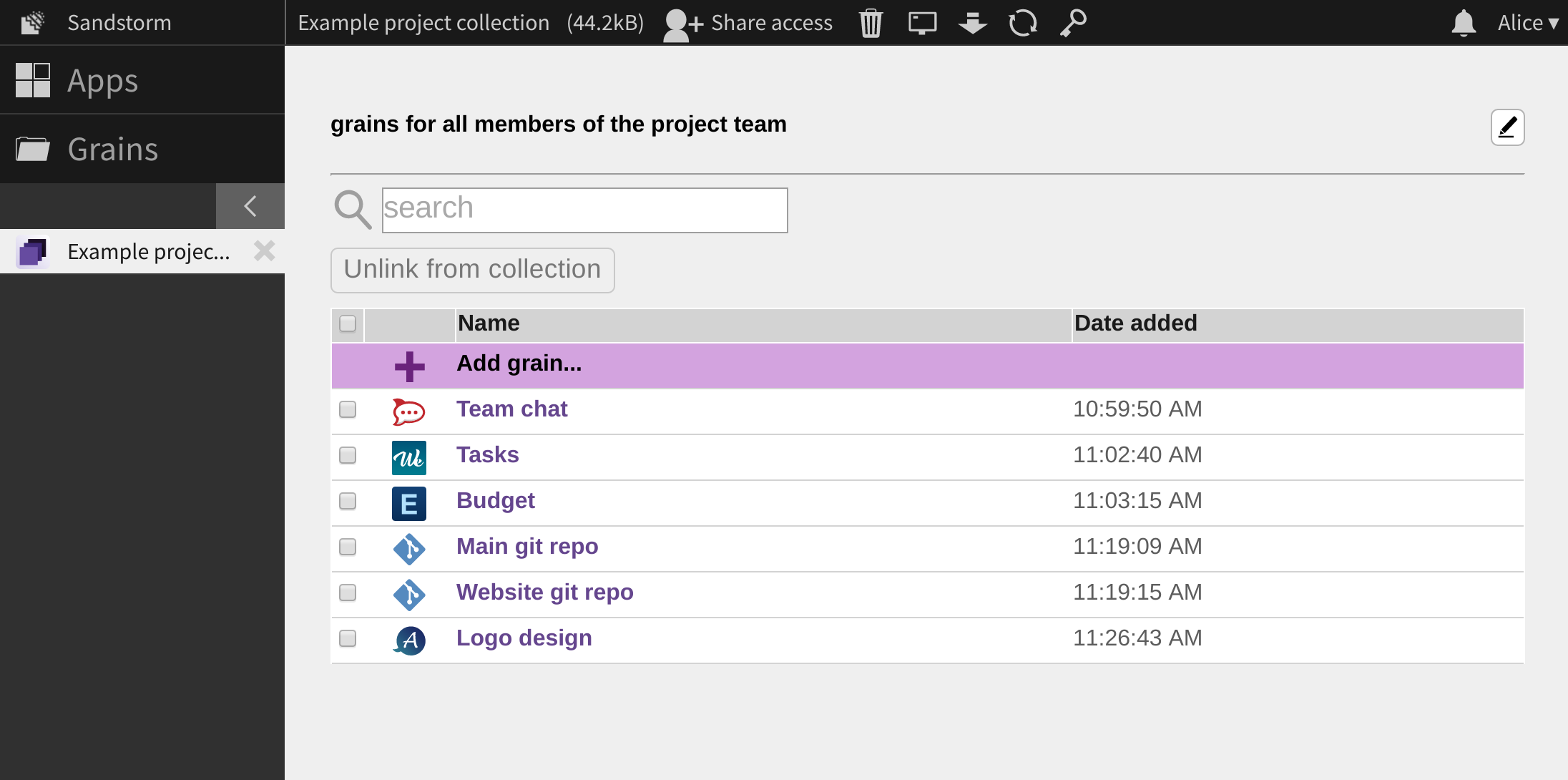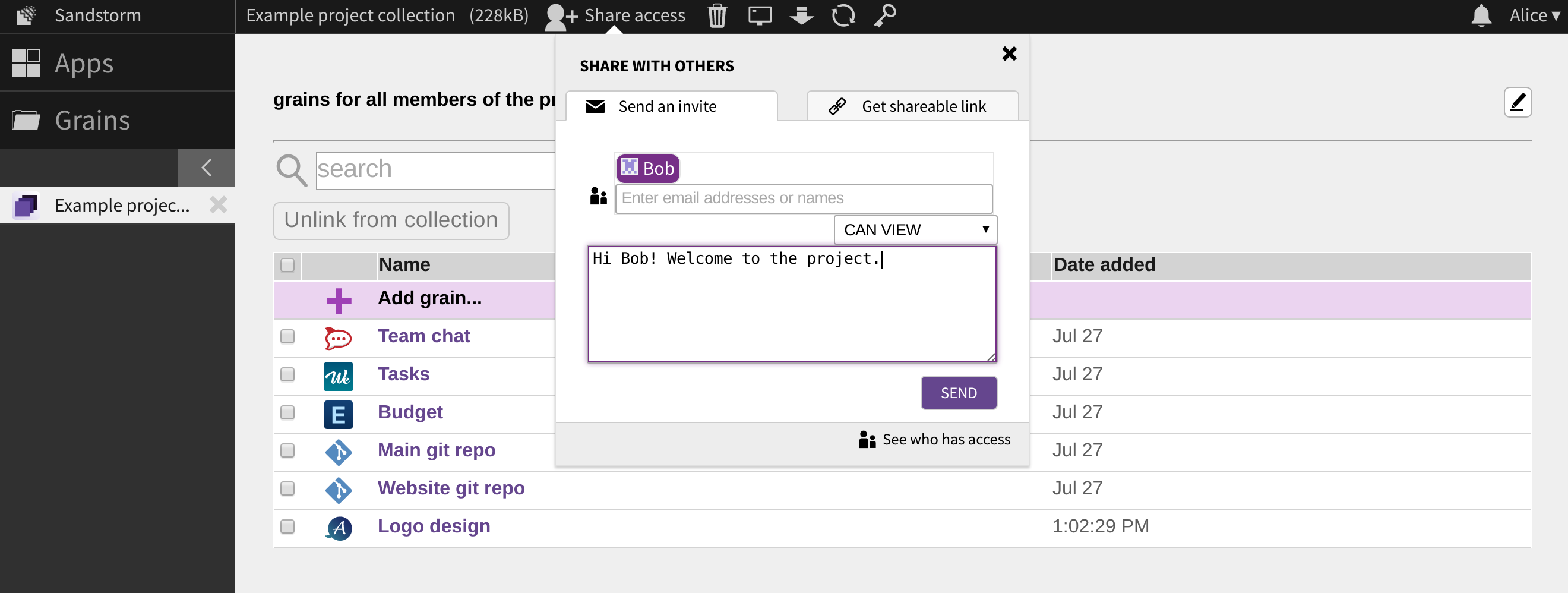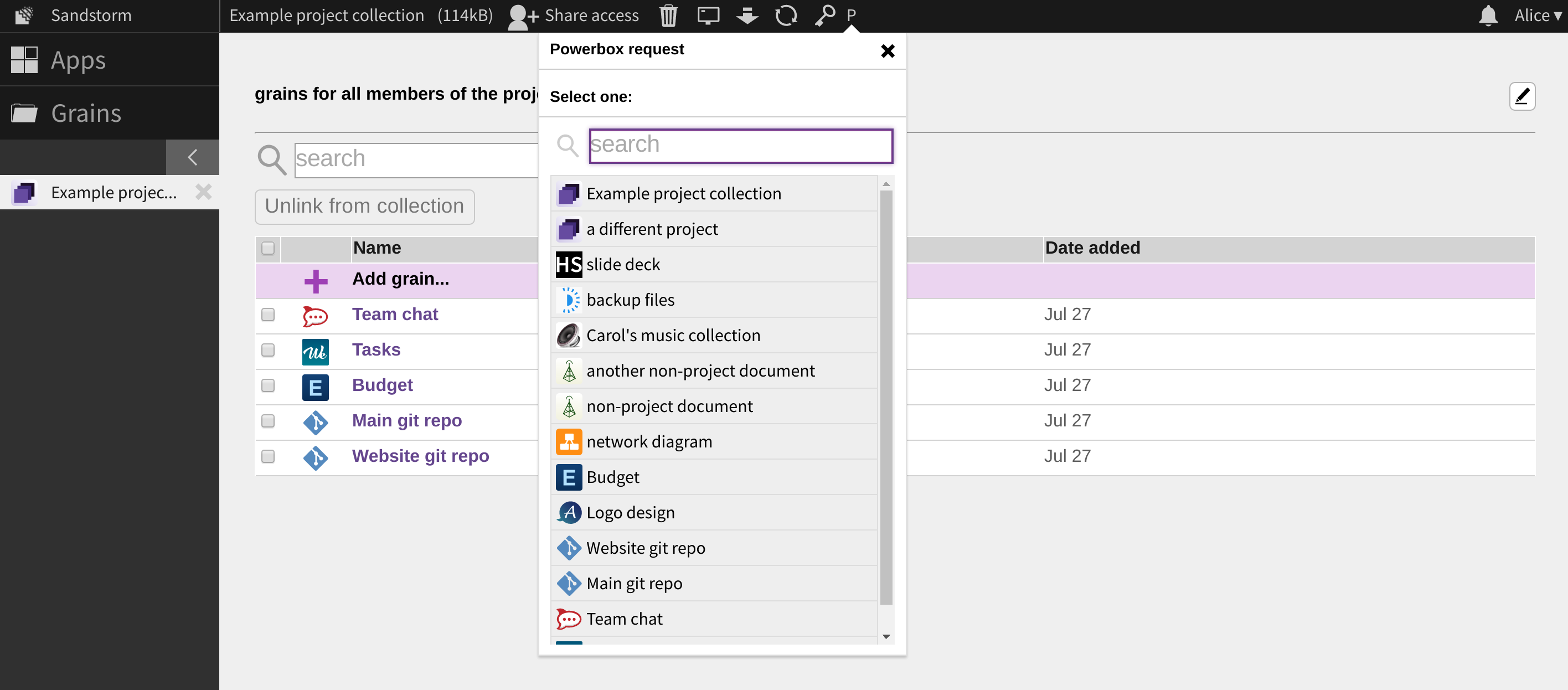Share many as one, with the Collections app
By David Renshaw - 09 Aug 2016
Starting work on a project in Sandstorm often means creating many grains, each pertaining to a different aspect of your work. In a typical project, you might have a spreadsheet, a chat room, a kanban board, and several source code repositories. Sandstorm makes it easy to share these grains with your collaborators, but until recently, you would need to share each grain to each collaborator separately — a task that could quickly become tedious. What if you want to share the entire project as a single unit?
Now that we have released the Collections app, we have a satisfying answer to that question; to share many grains at once, you add them to a collection.

A collection is a list of grains. Any collaborator with whom you share a collection gets access to all of the grains in it. On the flip side, when you remove a grain from the collection, your collaborators lose access to that grain. Moreover, when you revoke a collaborator from the collection, that (now former-) collaborator loses access to all of the collection’s grains.
And since a collection is itself a grain, sharing one works just like sharing anything else on Sandstorm, through the “Share access” button.

Powerbox makes it possible
The fact that we have implemented collections as an app may come as a surprise, since the notion of a collection might seem fundamental enough to deserve being baked-in as a core feature of Sandstorm. However, Sandstorm bakes in an even more fundamental notion: the idea that grains can refer to and coordinate with one another. The embodiment of this idea is the powerbox, an interface — mediated and auditable by the user — through which grains can exchange capabilities.
When you click the “Add grain” button in a collection, the collection in fact initiates a powerbox request. Sandstorm then asks you, the user, to choose a grain with which to fulfill the request.

Once you select a grain, the collection receives a reference to that grain. It can then use that reference to retrieve metadata such as the grain’s icon and the the name of the app that created the grain. Crucially, it can also offer the reference to your collaborators, so that your single “Add grain” action can result in all of your collaborators receiving access to the grain. The behind-the-scenes details of how this all works can be found in our technical documentation.
Other apps can use the powerbox in the same way. You could write an alternative implementation of collections, either by starting from scratch or by forking ours. Apps whose primary purpose has nothing to do with collections can also benefit from the ability to request and offer grain references. For example, a chat room could be enhanced by the ability to embed Sandstorm-aware links to other grains. Indeed, the latest release of Rocket.Chat does just that.
Built with Rust
Although a fast startup time and a small memory footprint are important performance goals for any Sandstorm app, they are especially important for the Collections app, as it provides such a central piece of functionality. Collections need to be lightweight so that their integration with the rest of Sandstorm can feel seamless. Our primary strategy for achieving such performance has been to develop the Collections app using the Rust programming language, interfacing directly with Sandstorm’s Cap’n Proto interfaces . Rust has worked well so far, and along the way we have produced some libraries and examples to help others also get started using it for Sandstorm app development.
Whether or not you are a developer, now is an exciting time to get involved with Sandstorm. The powerbox is still in its early stages, and the Collections app is a hint at the kinds of things it will enable. So try it out and let us know what you think!